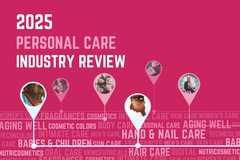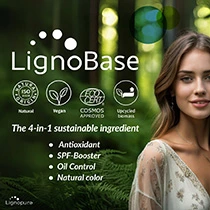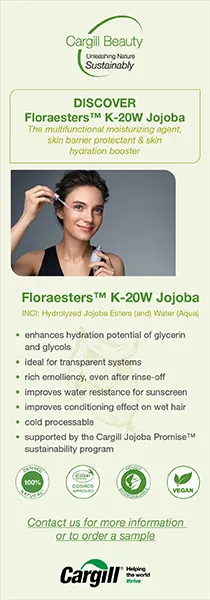Acorn harnesses users’ stem cells to create custom anti-aging serums

Biotech company Acorn is creating targeted anti-aging skin care made from a person’s own stem cells. By using the hair follicle, the company creates a personalized secretome serum, mixing medicine with skin care.
“The Acorn Secretome bridges today’s medical aesthetic procedures with the future of personalized regenerative medicine. It is grounded in strong science, designed for professional, in-office use, and built to evolve as technology advances,” a spokesperson from Acorn tells Personal Care Insights.
“By using the bioactive signals from your own autologous cells, we deliver a truly personalized and safe regenerative option today, all while preserving the ability to tap into even greater applications in the future.”
Science behind it
The secretome is made from a person’s own preserved hair follicle cells. These autologous stem cells are then expanded in a controlled lab environment, where they release a concentrated mix of growth factors, cytokines, and extracellular vesicles.
“This bioactive mixture is called the secretome. It is an a-cellular product, meaning it contains no live cells, and is designed exclusively for in-office use by medical professionals,” says the spokesperson.
 Acorn says the stem cells release complex signalling molecules that influence how other cells behave.“It is applied during or immediately after professional procedures such as microneedling or laser, supporting skin and scalp health by enhancing the body’s repair and renewal processes.”
Acorn says the stem cells release complex signalling molecules that influence how other cells behave.“It is applied during or immediately after professional procedures such as microneedling or laser, supporting skin and scalp health by enhancing the body’s repair and renewal processes.”
The company says the stem cells release complex signalling molecules that influence how other cells behave, supporting healthy collagen and elastin production, hydration, structural integrity of the skin, and regeneration.
“Acorn harnesses and amplifies the a-cellular secretome your stem cells produce. Because our source is autologous, the bioactive profile is unique to the individual and does not carry the compatibility concerns that can come with allogeneic (donor-derived) products,” says the spokesperson.
Biotech beauty
The demand for personalized beauty is rapidly increasing on a global scale. Meanwhile, biotech has also seen an increase in the industry in terms of its efficiency in ingredient formulation.
“The market is moving toward biologically active treatments such as exosomes, growth factor serums, and other cell-derived biologics, with a clear focus on personalization,” says Acorn.
“Our process delivers higher and more consistent growth factors than traditional approaches like platelet-rich plasma and platelet-rich fibrin.”
Platelet-rich plasma is used for a variety of cosmetic treatments. One of those is “vampire facelifts,” a procedure that uses platelet-rich plasma in a microneedle treatment as a filler for hyaluronic acid and one’s blood.
A “lifelong resource”
The next wave will involve reprogramming cells into different cell types, developing highly targeted biologics, and integrating regenerative medicine with genomic and proteomic data for precision interventions, Acorn tells us.
“In aesthetics, this could include lab-grown tissues, advanced biomaterials, and increasingly personalized regenerative boosters that address appearance, age, and tissue health.”
 Using stem cells for beauty applications is more sustainable than traditional ingredients.As technology and AI evolve, so does the beauty industry. Biotech companies recently told Personal Care Insights that AI will transform ingredient and product formulation and brand-consumer engagement through hyper-personalized marketing.
Using stem cells for beauty applications is more sustainable than traditional ingredients.As technology and AI evolve, so does the beauty industry. Biotech companies recently told Personal Care Insights that AI will transform ingredient and product formulation and brand-consumer engagement through hyper-personalized marketing.
Meanwhile, using stem cells for beauty applications is more sustainable than traditional ingredients. With one cell collection, an individual’s preserved autologous cells can be used to produce many treatments over time, Acorn explains.
“Multiple vials are preserved for patients when they bank. A patient’s stem cells act as a life-long resource, delivering value in the short-term in skin and hair rejuvenation and being an appropriate cell source in longer-term regenerative medicine strategies. The stem cells in the hair follicle have already turned into fat, bone, cartilage, neurons, pancreas, and immune cells in Acorn’s labs.”












